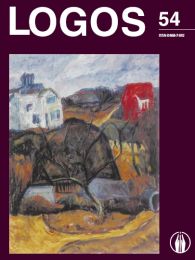Scholastinë Teologija: Pasaulio Sukûrimas Pagal Petrà Lombardà
Scholastic Theology: Creation of the World According to Peter Lombard
Author(s): Dalia Marija StančienėSubject(s): Metaphysics, Philosophy of Middle Ages, Philosophy of Religion, Hermeneutics, Ontology
Published by: Visuomeninė organizacija »LOGOS«
Keywords: Peter Lombard; Bible; scholastic theology; God; creation;
Summary/Abstract: This article analyzes the origins of medieval scholasticism: the ontological demonstration of God’s existence by Anselm of Canterbury, the study of theology and logic in the schools of Leon, Chartres and St. Victor. The author of the first scholastic manual (in use up to XVIth c.) was Peter Lombard. He was famous as a master of sententiae and his manual consisted of the four books of the sentences and was traditionally titled as the Quator libri Sententiarum Petri Lombardi. Perhaps only the Bible was commented upon more frequently than these books. Their author treats various questions concerning the creation of the world in the six days and the life conditions of humans before and after the Fall. In the latter case, he considers the nature and significance of the Holy Sacraments. He divides them into the four groups according to the species of things and signs. He separated signs from things indicating the two functions of the former: sense (New Testament) and meaning (Old Testament). Also, he defines those virtues of human soul which enable man to know the Creator and His creation as natural goods. Peter Lombard described the fundamental relations between God and the creation: God is the only creator Who created the universe out of nothing granting being for all his creatures by the act of his infinite wisdom and omnipotent will.
Journal: LOGOS - A Journal of Religion, Philosophy, Comparative Cultural Studies and Art
- Issue Year: 2008
- Issue No: 54
- Page Range: 62-75
- Page Count: 14
- Language: Lithuanian

